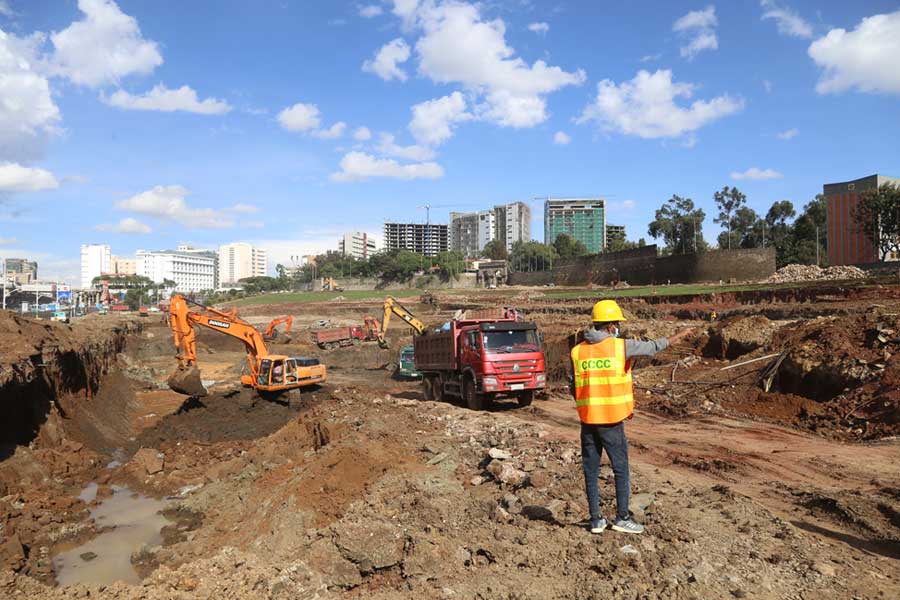
View From Arada | Dec 17,2022
It happened just as I opened my Facebook account. I had been away from it for a while and missed the theatre-themed group pages I had joined. On my homepage, I encountered an upsetting piece of news about the demolition of an old theatre building, a landmark in the capital. My heart raced but not for too long. The news was proven nothing more than baseless rumour. Perhaps it was a product of Chinese whispers, where a message is distorted as it gets from one person to another over time.
The circumstances around the rumour rekindled what has been going on in my mind for the last two weeks - the love and care people attach to public spaces and landmarks. One of my favourite is the National Theatre, which I visit to watch a play every weekend.
Last Sunday, to grace a show with my presence, I arrived early. Yet, I was greeted with a long queue. I did not complain. If this is the price we pay for a thriving theatre scene, so be it. I happily joined the long queue. Then, it was immediately I started to ponder the sight of all who joined the line for tickets. Almost everybody was busy on their phones. It was almost only me who was, as it was part of the reason I go to theatre shows, to distance myself from digital gadgets, that had the luxury of enjoying my surroundings. Here again, it was hard to complain. Better they scroll on their phones in the queue than during a show.
As I was surveying the queue, right before I moved my eyes, I noticed a young girl. I immediately identified her as I knew her look-alike mother, with whom I used to work years ago. It surprised me that the last time I met them at one of the new condominium houses was almost a decade ago. This is the type of accident one has at the theatre.
But this was only the beginning. As I was being amazed by the rather clean environment, I noticed how the ground floor of the building also was embellished by numerous little restaurants among which whose windows vaunted raw meat, small shops marketing a lively variety of homespun things, all cheek by jowl, filled to the brim, taking care of a lot of customers. I was told that the site is aptly nicknamed, “Facebook.”
It is not only the National Theatre’s external space that is interesting. There are also the plays, which among them is the long-running, “Babylon in the Salon.” The actors' respect for the audience is more than evident, as many of the changes going around the landmark theatre are certainly promising. All the time I have been to the show, the lead actors repeat a particular act with near perfection, impressing with dramatic effect.
Public landmarks and spaces are the essences of a city. They are places where people meet and interact; socialise and discover common passions; and where they affirm their shared rights to the city. After all, the funding that goes into erecting and maintaining them is not aesthetics in the name of aesthetics. It is about defining the identity of a city, what it aspires to and the diversity of its residents and culture.
The likes of the National Theatre, Abrehot Library and even Friendship Square do have an intrinsic value. In case of the National Theatre, it nurtures culture and the arts, and in Abrehot, it serves as a valuable space for knowledge acquisition. But they are also landmarks in their own right, signifying what Addis Abeba aspires to, underlying its history and manifesting its identity.
PUBLISHED ON
Apr 09,2022 [ VOL
23 , NO
1145]


View From Arada | Dec 17,2022

Viewpoints | Nov 06,2021

Commentaries | Jun 20,2020

Fortune News | Oct 30,2021

Fortune News | Dec 28,2019

Agenda | Sep 01,2024

Verbatim | Feb 01,2020

Viewpoints | Apr 30,2022

Agenda | May 09,2020

Radar | Nov 16,2024

Dec 22 , 2024 . By TIZITA SHEWAFERAW
Charged with transforming colossal state-owned enterprises into modern and competitiv...

Aug 18 , 2024 . By AKSAH ITALO
Although predictable Yonas Zerihun's job in the ride-hailing service is not immune to...

Jul 28 , 2024 . By TIZITA SHEWAFERAW
Unhabitual, perhaps too many, Samuel Gebreyohannes, 38, used to occasionally enjoy a couple of beers at breakfast. However, he recently swit...

Jul 13 , 2024 . By AKSAH ITALO
Investors who rely on tractors, trucks, and field vehicles for commuting, transporting commodities, and f...

Oct 18 , 2025
The political establishment, notably the ruling party and its top brass, has become p...

Oct 11 , 2025
Ladislas Farago, a roving Associated Press (AP) correspondent, arrived in Ethiopia in...

Oct 4 , 2025
Eyob Tekalegn (PhD) had been in the Governor's chair for only weeks when, on Septembe...

Sep 27 , 2025
Four years into an experiment with “shock therapy” in education, the national moo...